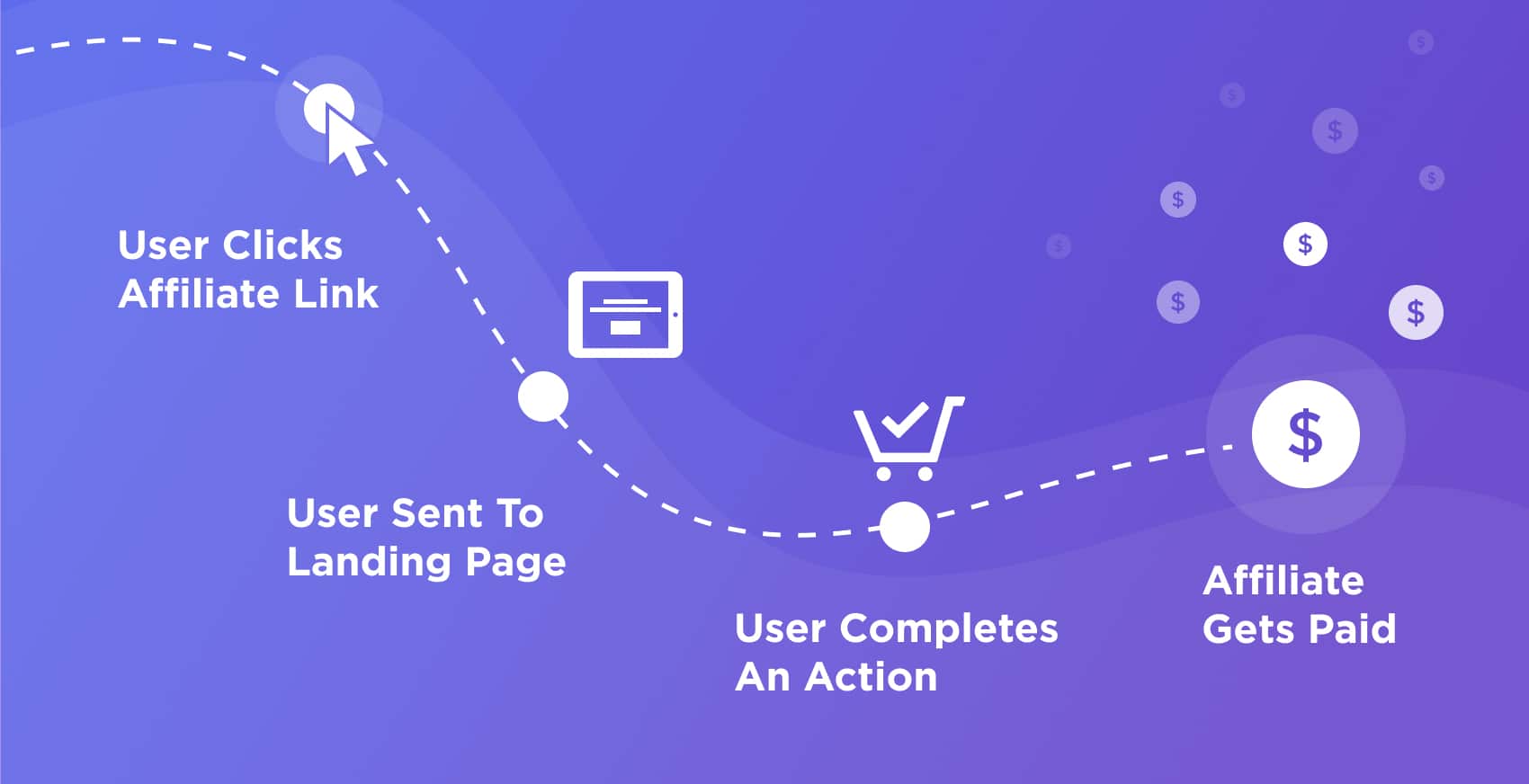The best marketing attribution models are frameworks for determining which touchpoints or marketing channels should be given credit for a conversion. You can better understand the big picture regarding return on investment (ROI). This is through analyzing the marketing attribution models at your disposal.
This article will provide a brief introduction to marketing attribution models and the various types of marketing attribution models on the market.
What Is Marketing Attribution?
The term “marketing attribution” refers to analyzing the various “marketing touchpoints” a customer experiences before making a purchase decision. Attribution seeks to identify the most influential channels and messages that led to a desired action or conversion.
Multi-touch attribution, lift studies, time decay, and other popular marketing attribution models are used by marketers today. These models’ insights into how, where, and when a consumer interacts with brand messages enable marketing teams to alter and customize campaigns to meet the specific desires of individual consumers. This thereby improves the marketing ROI.
What Are The Marketing Attribution Models?
Marketing attribution models use statistical analysis at the user level to assign value to marketing campaigns. This contrasts with aggregate data models, such as marketing mix modeling.
Because of this person-centric approach, different marketing attribution models are more commonly used in digital campaigns than offline ones, such as print advertising. Each of the best attribution models is based on different analytical techniques.
The best marketing attribution models that are effective will reveal information about:
- Which messages were delivered to a consumer and through which channel?
- Which touchpoint had the greatest influence on their purchasing decision?
- The importance of brand perception in the decision to convert
- The significance of message sequencing
- Which message is most effective with each consumer?
- The influence of external factors (e.g. how gas prices affect car sales)
What Are The Various Types Of Marketing Attribution Models?
The various types of marketing attribution models include:
#1. The First-Touch Attribution
These models, also known as “first-click” or “first-interaction,” attribute 100% of the credit for each conversion to a single source. According to the name, a customer’s first recorded interaction with your company is credited with driving the ultimate conversion regardless of how many additional touchpoints occur in between.
#2. The Last-Touch Attribution
The last-touch attribution models, like first-touch attribution, attribute full credit for a conversion to a single interaction. In this case, it is an individual’s most recent interaction with your company.
The last thing a customer does before converting is assumed to be the only thing responsible for driving that conversion. It can be clicking an ad, receiving an email, or interacting with a social media post.
#3. The Last Non-Direct Touch Attribution
If your company’s buying cycle is anything other than the shortest and simplest, last-touch and first-touch may not be enough to truly help you understand the effectiveness of your various marketing channels.
Last non-direct touch, the default attribution model for Google Analytics reports, gives no credit for conversions to direct traffic, such as when someone clicks a bookmarked link or enters a URL manually to reach your site.
#4. The Single- vs. Multi-touch Attribution Models
The first- and last-touch models can be good starting points, especially if you can track and report on de-duplicated conversions in a single, integrated data source. A multi-touch attribution model is required if customers interact with your brand multiple times during their conversion journey.
#5. The Linear Attribution
If your company’s buying cycle is more complex, if customers interact with your brand several times during their conversion journey, then a linear attribution model provides insight beyond the first or last interaction. Unlike the previous models, linear attribution can account for multiple touchpoints on the path to conversion, but it equally weights all touchpoints.
If a customer interacts with a Facebook ad, a display ad, and a paid search placement before making a purchase, credit for that conversion is divided three ways.
#6. The Time Decay Attribution
To better understand the actual value of the various interactions that lead up to a conversion, consider not only the order of those interactions but also their timing with the actual moment of conversion.
A time decay attribution model accomplishes this by distributing credit across multiple events. It also does this by assigning more credit to those closer to the conversion time, assuming that those events had a greater impact on the purchase decision.
#7. The Position-Based Attribution
Position-based attribution models assume that the two most important interactions a customer has with your company are the first and last before conversion. According to this hypothesis, the position-based attribution model gives a fixed credit for every conversion to the customer’s first and last points of contact with the brand before conversion.
Any interactions that occur between those two points share the remaining credit equally. Google Analytics’ default and position-based model assigns 40% to the first and last interactions. Then, they divide the remaining 20% evenly among all those in between.
#8. The Algorithmic or Data-Driven Attribution
In Google Analytics, algorithmic attribution models, known as Data Driven or DDA, use machine learning to assign fractional credit across multiple interactions dynamically. This thereby leads to a conversion event. They are most effective when there is a high volume of interactions and conversions.
In Google Analytics, for example, the minimum requirement is at least 600 conversions per month. The algorithmic models help remove the guesswork from determining which model is best for your business.
What are the Best Marketing Attribution Models?
A buyer’s journey to conversion now includes numerous devices and touchpoints. This is because businesses are promoting their brands in the market through a multi-channel approach.
Each Analytics platform offers unique types of marketing attribution models. A company may promote the same brand on Facebook, Instagram, and YouTube. Before taking positive action, marketers should understand the channels through which users interact.
They can use this to create more personalized campaigns, and businesses can use it to improve their customer experiences. Marketing attribution models can accomplish this.
The following is a list of the best types of marketing attribution models to consider for your 2023 marketing campaigns:
- First-Touch Marketing Attribution Model
- Last-Touch Marketing Attribution Model
- Linear Multi-Touch Marketing Attribution Model
- U-Shaped Multi-Touch Marketing Attribution Model
- Time Decay Multi-Touch Marketing Attribution Model
- W-Shaped Multi-Touch Marketing Attribution Model
- Custom Multi-Touch Marketing Attribution Model
How Do You Measure Marketing Attribution?
Marketing attribution can be measured using the best models that weigh various aspects of the campaign to determine which advertisements were most effective. Different marketing attribution models are available, and many face significant challenges, such as combining offline and online data.
Choosing the best marketing attribution models is critical for accurately measuring the effectiveness of your campaigns. Also, it’s critical to allocate the budget or determine the next steps.
What Kinds of Questions Can Marketing Attribution Provide Answers To?
In general, marketing attribution reporting can assist you in answering the following questions about the performance of your campaigns:
- How do the best marketing attribution models work?
- How to Create a Custom Marketing Attribution Model in Three Steps
- How to improve your marketing budget allocation?
- How to determine which channels are most effective for different customer segments and target users based on their lifetime value?
- How to increase the granularity of your marketing performance?
What Can Be Done to Improve Marketing Attribution?
Don’t let perfectionism become the enemy of good. It takes time, troubleshooting, and experience to create high-quality attribution reports.
Begin with clear, simple data, and then worry about attributing the marketing mix to revenue. Keep campaigns simple and gradually expand the number of marketing channels.
What Is the Purpose of the Best Marketing Attribution Models in Marketing?
Marketers can use the best marketing attribution models to determine how much credit each marketing channel and customer touchpoint should receive for a conversion. This approach allows marketers to tailor their programs to the channels and touchpoints that generate the most value over time.
Which Among the Best Marketing Attribution Models Is the Most Precise?
The algorithmic attribution model is one of the best marketing attribution models and the most precise way to track a user’s progress from prospect to conversion. This model has a higher success rate than others because it is customized for each business.
What Is Facebook’s Attribution Model?
Facebook Attribution Modeling is a tool for measuring the effectiveness of advertising. It allows you to evaluate the entire conversion path on and off Facebook to determine which ads influence your customers’ decision to buy or convert.
Marketers use it to measure and comprehend their ads’ true impact and value across multiple publishers, channels, and devices. They do this to determine which campaigns are the most effective and make more informed business decisions.
There are lots of Facebook attribution models. The Facebook attribution model you select can impact your ability to measure the value of your advertisements and strategic decisions accurately.
The four categories of Facebook attribution models are as follows:
- Rules-based models are predefined formulas that evaluate conversion touchpoints regardless of conversion type or user behavior.
- Single-touch models attribute all conversion credit to a single touchpoint.
- Multi-touch models give fractional credit to each touchpoint in the consumer’s conversion path. Thereby allowing you to see how much influence each channel has on a sale.
- Data-driven Attribution Models evaluate historical data using machine learning algorithms. This helps to determine which touchpoints are most likely to drive conversions.
Conclusion
If you already understand your sales cycle well, you might already know that one of the models described above will work for you. However, many businesses have unique funnels with specific needs that a standard attribution model may not fully meet.
The path to a custom attribution model that meets your business objectives is frequently gradual.
Related Articles
- Buyer’s Journey: Meaning, Stages & How to Implement in Sales Process
- LEAD CONVERSION: Examples and Rates
- WHAT IS CASH CONVERSION CYCLE: How to Boost and Calculate CCC
- REVENUE MODELS: Meaning, Practical Examples, Types (Detailed Guide)
- MARKETING ATTRIBUTION: Definition, Modelling, Everything You Need






